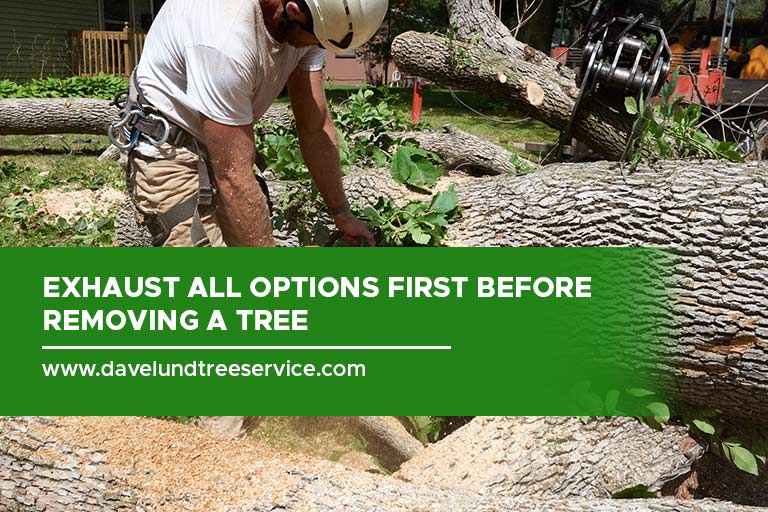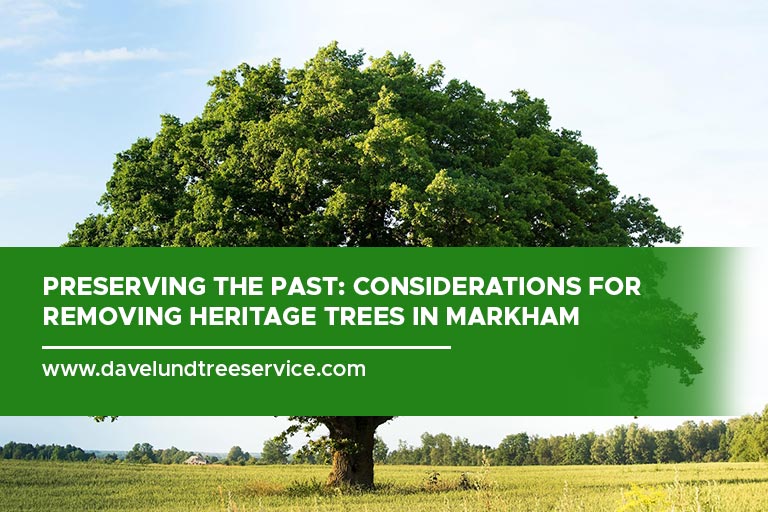In Markham, heritage trees stand as living monuments to our history and environment. These ancient giants provide shade, clean air, and a sense of continuity, making their preservation crucial.
However, when removal becomes necessary, it involves careful consideration and respect for their legacy. This blog explores the key factors to consider when removing heritage trees in Markham, ensuring we balance progress with preservation.
What Are Heritage Trees?
Heritage trees are more than just old and large trees. They are vital links to our past, often serving as markers of historical events, cultural landmarks, or natural wonders within our community.
In Markham, a tree may be designated as a heritage tree based on its age, size, species rarity, or historical significance. These trees have stood the test of time, witnessing the growth and transformation of the area.
“Ancient trees are precious. There is little else on Earth that plays host to such a rich community of life within a single living organism.” – Sir David Attenborough
Consider, for example, the ancient oak that might have provided shade for early settlers or the towering maple that has become a seasonal icon for local festivals. Heritage trees are not only valued for their aesthetic beauty but also for their ecological importance. They support diverse wildlife, contribute to the local ecosystem, and offer educational opportunities for residents and visitors alike.
Legal and Regulatory Framework

Removing a heritage tree in Markham is not a decision taken lightly, and it involves navigating a complex web of laws and regulations designed to protect these natural treasures. The city has established stringent guidelines to ensure that any actions taken are thoroughly justified and responsibly executed.
To begin with, anyone considering the removal of a heritage tree must obtain the necessary permits. This process includes submitting detailed applications that outline the reasons for removal, supported by evidence such as arborist reports or safety assessments. These applications are reviewed by city officials who assess the potential impact on the community and environment.
Markham’s Tree Preservation By-law plays a central role in this regulatory framework. It sets out specific criteria for what constitutes a heritage tree and the conditions under which it can be removed. Violating this by-law can result in substantial fines, underscoring the city’s commitment to preserving its natural heritage.
In addition to local regulations, there may also be provincial or national laws that come into play, particularly if the tree species is protected under broader conservation statutes. Therefore, it is crucial for property owners and developers to fully understand the legal landscape before proceeding with any removal plans.
Alternatives to Removal

When it comes to heritage trees, removal should always be the last resort. There are several viable alternatives that can preserve these vital parts of our landscape while addressing any concerns that may arise.
- One effective option is pruning. Strategic pruning can remove dead or hazardous branches, improve the tree’s health, and reduce the risk of falling limbs without compromising the tree’s overall structure. This approach maintains the tree’s presence and continues to offer ecological benefits.
- Cabling and bracing are another set of techniques used to support structurally weak trees. By installing flexible cables and rigid rods, arborists can reinforce the tree and prevent potential breakage. This method is particularly useful for trees with significant historical or aesthetic value, allowing them to remain safely in place.
- Soil management practices can also make a significant difference. Compacted or poor-quality soil can be detrimental to a tree’s health. Aerating the soil, adding organic matter, and ensuring proper irrigation can revitalize a stressed tree and promote robust root growth.
- In some cases, tree relocation may be a feasible alternative. While it is a complex and costly process, relocating a heritage tree to a safer location can preserve its life and historical value. This method involves carefully uprooting the tree and transplanting it to a new site where it can continue to thrive.
- Another creative solution is the integration of the tree into new development plans. Instead of removing a heritage tree to make way for construction, architects and planners can design around it. This not only preserves the tree but also enhances the aesthetic and environmental appeal of the project.
Steps for Responsible Removal
When all other options have been exhausted and the removal of a heritage tree becomes necessary, it is crucial to approach the task with utmost responsibility and respect. Here is a step-by-step guide to ensure the process is carried out thoughtfully and with minimal impact.
1. Obtain Necessary Permits
Before any removal work begins, ensure you have secured all required permits from the city. This involves submitting a detailed application and waiting for approval. The process ensures that the decision to remove the tree is justified and complies with local regulations.
2. Consult with Experts
Engage certified arborists and tree care professionals to conduct a thorough assessment of the tree. Their expertise will help confirm that removal is indeed the best option and will guide the process to ensure it is done safely and efficiently.
3. Notify the Community
Informing the local community about the planned removal is a critical step. This can help manage public expectations and address any concerns. Transparency fosters trust and ensures that the community understands the reasons behind the decision.
4. Plan the Removal
Develop a comprehensive plan for the removal. This should include safety measures, equipment needed, and the timeline for the work. The plan should also outline how the tree and its parts will be handled after removal.
5. Execute the Removal
Carry out the removal with precision and care. The process should minimize disruption to the surrounding area and ensure the safety of workers and residents. Specialized equipment and techniques may be required, particularly for large or hazardous trees.
6. Dispose of Debris Responsibly
After the tree is removed, manage the debris responsibly. This may involve recycling the wood, donating it for community projects, or using it for educational purposes. Proper disposal ensures that the materials are repurposed sustainably.
7. Restore the Site
Once the tree is removed, take steps to restore the site. This can include replanting new trees, landscaping, or making improvements to enhance the area. Restoration efforts help mitigate the loss and contribute to the community’s green space.
8. Document and Learn
Document the removal process, noting any challenges and successes. This information can be valuable for future reference and for improving tree management practices. Sharing these insights with the community and other stakeholders can also foster better understanding and cooperation.
Handling the Process for You
Professional tree service in Markham can manage the entire heritage tree removal process for you, ensuring it is conducted safely, legally, and with minimal impact on the environment.
Embracing the Future While Honouring the Past
If you find yourself in need of professional assistance, trust the experts at Dave Lund Tree Service & Forestry to handle every step of the process with precision and care. Contact us at (905) 884-0511 for expert advice and services including tree removal in Markham. Let’s work together to honour our past while making way for a sustainable future.

